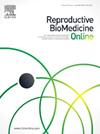Shaping the future of the IVF laboratory: standardization for more predictable outcomes
IF 3.7
2区 医学
Q1 OBSTETRICS & GYNECOLOGY
引用次数: 0
Abstract
IVF is the foundational technology in the broader field of assisted reproductive technology (ART). The IVF laboratory is at the heart of ART, both as a major source of innovation and advancement and as a key to the success of the treatments. However, substantial variability in laboratory practices persists, despite longstanding efforts to establish uniform standards for improved reliability, reproducibility, and comparability. This commentary highlights the core factors contributing to disparity in outcomes and illustrates how emerging technologies, particularly artificial intelligence and robotics, offer new opportunities to propel standardization forwards. By integrating data-driven benchmarks and automated processes, including in quality management, the future IVF laboratory can achieve better and more predictable outcomes and advance the global standard of care.
塑造试管婴儿实验室的未来:标准化更可预测的结果
体外受精是辅助生殖技术(ART)更广泛领域的基础技术。试管婴儿实验室是ART的核心,既是创新和进步的主要来源,也是治疗成功的关键。然而,尽管长期以来努力建立统一的标准以提高可靠性、可重复性和可比性,但在实验室实践中,实质性的可变性仍然存在。本评论强调了导致结果差异的核心因素,并说明了新兴技术,特别是人工智能和机器人技术如何为推动标准化提供新的机会。通过整合数据驱动的基准和自动化流程,包括质量管理,未来的试管婴儿实验室可以获得更好、更可预测的结果,并提高全球护理标准。
本文章由计算机程序翻译,如有差异,请以英文原文为准。
求助全文
约1分钟内获得全文
求助全文
来源期刊

Reproductive biomedicine online
医学-妇产科学
CiteScore
7.20
自引率
7.50%
发文量
391
审稿时长
50 days
期刊介绍:
Reproductive BioMedicine Online covers the formation, growth and differentiation of the human embryo. It is intended to bring to public attention new research on biological and clinical research on human reproduction and the human embryo including relevant studies on animals. It is published by a group of scientists and clinicians working in these fields of study. Its audience comprises researchers, clinicians, practitioners, academics and patients.
Context:
The period of human embryonic growth covered is between the formation of the primordial germ cells in the fetus until mid-pregnancy. High quality research on lower animals is included if it helps to clarify the human situation. Studies progressing to birth and later are published if they have a direct bearing on events in the earlier stages of pregnancy.
 求助内容:
求助内容: 应助结果提醒方式:
应助结果提醒方式:


